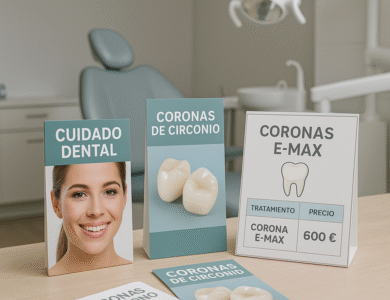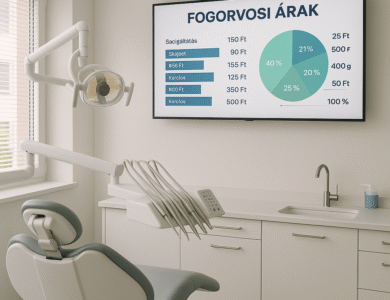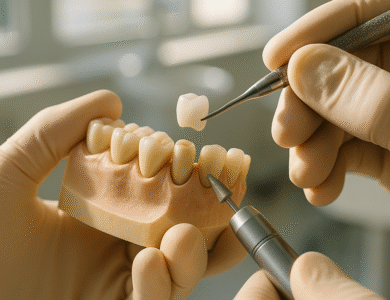
Cost Guide for Veneers in 2025: Everything You Need to Know
Cost Guide for Veneers in 2025: Everything You Need to Know
Veneers are a popular cosmetic dental procedure designed to improve the appearance of teeth. If you’re considering enhancing your smile, understanding the Cost Guide for Veneers is crucial for making informed decisions. This article will cover all aspects related to the costs of veneers, including types, factors influencing prices, and what you can expect during the process.
What Are Veneers?
Veneers are thin, custom-made shells designed to cover the front surface of teeth, providing a natural look. They can be used to correct various dental issues such as staining, chips, gaps, and misalignment. Learning about these options is an important part of any Cost Guide for Veneers.
Types of Veneers
There are primarily two types of veneers available:
- Porcelain Veneers: These are the most popular due to their durability and stain resistance. They usually last between 10 to 15 years.
- Composite Veneers: Made from a tooth-colored resin, they are more affordable but tend to wear down faster, lasting about 5 to 7 years.
Understanding the type of veneer you need is essential when evaluating the Cost Guide for Veneers, as material choice significantly impacts price.
Veneers Cost Breakdown
The cost of veneers can vary significantly based on several factors. Here’s a detailed breakdown:
1. Material Costs
Porcelain veneers generally range from $900 to $2,500 per tooth, while composite veneers are typically priced between $250 to $1,500 per tooth.
2. Laboratory Fees
Custom veneers often require molds and lab work, which can add $300 to $1,000 to your total cost.
3. Location
The geographical location of your dental practice can influence costs. Urban areas tend to have higher prices than rural locations due to increased overheads.
4. Dentist’s Experience
Dentists with extensive experience and specialized training may charge more for their services, but they often deliver superior results.
5. Additional Procedures
Some patients may need preparatory procedures, such as teeth whitening or periodontal treatments, which can add to the overall costs.
Insurance Coverage for Veneers
It’s essential to note that veneers are typically considered a cosmetic procedure, meaning that most dental insurance plans do not cover their costs. However, some plans may offer limited coverage if the veneers are deemed necessary for dental health. Understanding insurance options is a key step in the Cost Guide for Veneers.
Factors Affecting the Cost Guide for Veneers
-
Number of Teeth: The more veneers you need, the higher the total cost.
-
Material Choice: Porcelain vs. composite significantly changes pricing.
-
Customization Level: Some clinics offer fully customized veneers for a more natural look, which may be more expensive.
-
Location & Clinic Quality: Premium clinics in metropolitan areas often charge more but offer advanced technology and higher-quality materials.
FAQs About Cost Guide For Veneers
Are veneers worth the investment?
Many patients find veneers to be a valuable investment in their smile, leading to increased confidence and satisfaction with their appearance.
How long do veneers last?
Porcelain veneers can last between 10 to 15 years, whereas composite veneers generally last about 5 to 7 years with proper care.
Can I get veneers on all my teeth?
Yes, you can choose to get veneers on all your teeth or just select ones based on your cosmetic goals.
Is there a payment plan available for veneers?
Many dentists offer financing options or payment plans that can help make the cost of veneers more manageable for patients.
Will veneers require replacement?
Eventually, all veneers may need to be replaced. Porcelain lasts longer, but both types require proper oral hygiene for maximum longevity.
Are there any risks or side effects?
Some patients may experience tooth sensitivity after veneer placement. Discussing risks with your dentist is crucial in the Cost Guide for Veneers.
Can veneers fix misaligned teeth without braces?
Yes, veneers can mask minor misalignments, but severe orthodontic issues may still require braces or Invisalign.
How do I choose the best dentist for veneers?
Look for experience, certifications, portfolio of previous cases, and patient reviews. A knowledgeable dentist is vital when considering the Cost Guide for Veneers.
Conclusion
Understanding the veneers cost guide is essential for anyone looking to enhance their smile. By considering the factors mentioned above, you can make an informed decision about your dental health and cosmetic goals. If you feel ready to take the next step towards a brighter smile, consult with an experienced dentist to discuss your options.
To see inspiring before-and-after photos about oral and dental health, visit docintur.com.





